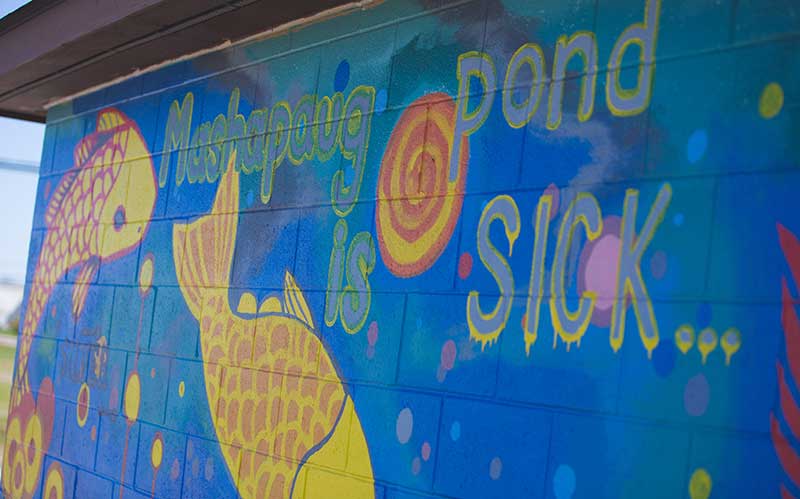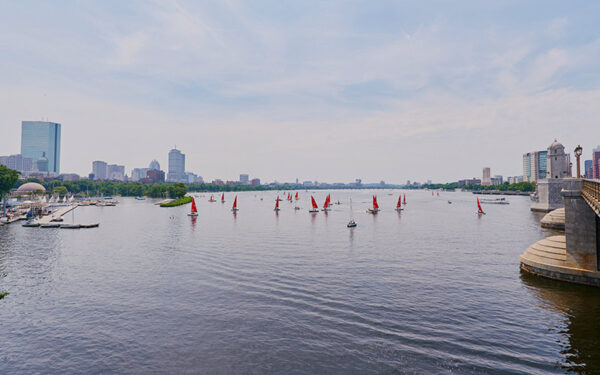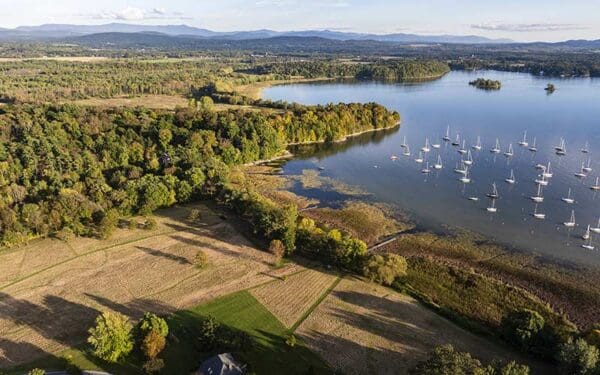
Unchecked stormwater pollution is making Rhode Island water bodies like Mashapaug Pond off-limits for residents.
Stormwater runoff polluted by oil, dirt, and toxins while flowing over streets and parking lots is one of the biggest threats to clean water today. Densely populated states with lots of paved surfaces, like Rhode Island, are most vulnerable to its dangerous impacts. Runoff can lead to big issues for local waterways, including toxic blue-green algae outbreaks that make our ponds, rivers, and beaches unsafe for swimming, boating, and fishing.
Stormwater is also preventable, and CLF is working to do just that across New England. Here in Rhode Island, we recently filed petitions urging the Rhode Island Department of Environmental Management (DEM) to use its authority to safeguard three local water bodies: Mashapaug Pond in Providence, and Bailey’s Brook and North Easton Pond on Aquidneck Island.
Our goal: hold polluters accountable for runoff from their properties and restore these waters to health.
Unchecked Pollution Puts Local Waters Off-Limits to Residents and Tourists
Located in the Reservoir Triangle neighborhood of South Providence, Mashapaug Pond is the city’s largest freshwater lake, but it is too dirty for people to use and enjoy. Industrial facilities and a shopping center line its shores on one side, while houses and a park border it on another. Neighbors of Mashapaug, who would love to use their backyard pond as a place to swim and fish with their families, have long been warned to avoid contact with its toxic waters.
The problem doesn’t affect Mashapaug alone. Water from the pond flows into the Roger Williams Park pond system, which also suffers from high levels of bacteria and other pollutants.
Thirty miles away in Middletown, just outside of Newport, is Bailey’s Brook, a 4.8-mile-long stream that flows into North Easton Pond. North Easton Pond flows into South Easton Pond, and both provide drinking water to the residents of Aquidneck Island. Pollution in Bailey’s Brook and North Easton Pond – including harmful blue-green algae outbreaks – has long threatened water quality on Aquidneck Island, making its waters unsafe for recreation and leading to sudden beach closures that frustrate locals and tourists alike.
Stormwater Pollution is Preventable. Here’s What We Can Do to Get It Under Control.
The good news is that we already know what’s making these water bodies sick. In legally required studies and analyses, DEM has documented just how stormwater from heavily paved commercial, industrial, and residential properties is harming Mashapaug Pond, Bailey’s Brook, North Easton Pond, and other nearby water bodies.
Despite these studies, the owners of many of these properties do not have to manage their polluted stormwater runoff. DEM has the authority to change that. Under the Clean Water Act, the agency can require stormwater permits for runoff that contributes to violations of water quality standards. CLF’s petitions demand that DEM invoke this authority to require permits and clean up the pollution that is plaguing Mashapaug Pond, Bailey’s Brook, and North Easton Pond.
What Will Permitting Accomplish? Clean Water for All
Once DEM follows through on our petition, property owners will have to obtain a permit for their runoff and take steps to clean it up. That will mean a substantial decrease in pollution flowing into Mashapaug Pond, Bailey’s Brook, and North Easton Pond.
These water bodies will then have a chance at recovery. For the first time in decades, they can once again be safe places for boating, swimming, and fishing. They can be great community assets instead of toxic hazards. But before that can happen, stormwater pollution and the dischargers responsible for it must be brought under control.



